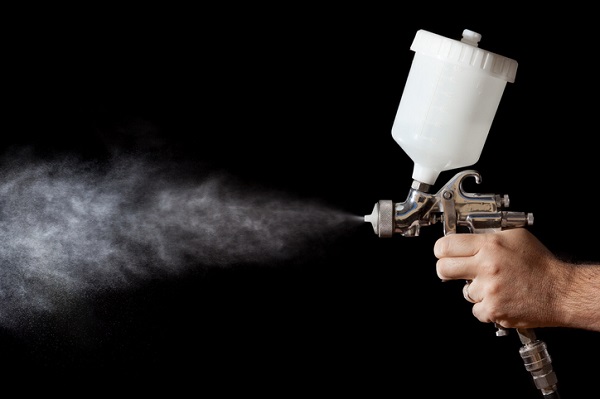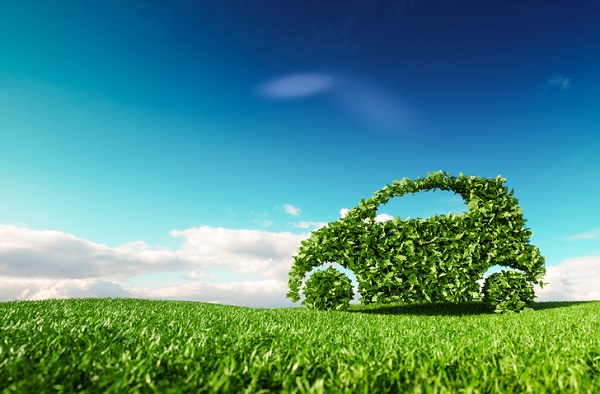
Spray guns allow for auto body techs to easily and uniformly paint cars. They are a big reason why a smooth, professional paint job is possible on surfaces that have curves and bends. Spray guns are powered by air compressors, which create the pressure that forces paint out of the nozzle on the gun.
You will likely encounter both gravity feed and traditional siphon feed guns in your career, with gravity feed widely favoured for most jobs. These guns were invented and became popular in the 1980s, with high volume and low pressure systems, commonly referred to as HVLP. Read for more about gravity feed spray guns, with a bit of background on the differences between them and traditional systems.
If You’re in Auto Body Technician Training Have a Look at Atomization
Atomization is the conversion of liquid into spray, separating it into tiny particles in the air. The way that a spray gun does this is by creating a rush of air that passes by the fluid, making a vacuum and sucking the fluid into its stream. This ejects and forces a spray or mist out of the nozzle. The need for a vacuum means that spray guns need to have both air and liquid passageways and must have an effective air compressor to do their job. If there is no pressure and no vacuum, spray won’t be created. The way that gravity feed guns achieve this differs slightly from traditional siphon feeds.

Gravity Feed Vs. Siphon Spray Guns for Auto Body Repair Technicians
With siphon feed, the paint is underneath the nozzle, and with gravity feed, the paint is above the nozzle. As you can probably guess if you’re in auto body technician training, a siphon feed needs more intense air pressure or the paint won’t effectively draw up into the nozzle. On the contrary, gravity feed guns have the assistance of gravity pulling the paint down, so less pressure needs to be used.
In most cases, technicians will choose to use gravity feed as they are more efficient, but you still may use siphon spray guns in your career, depending on the job you’re tackling. For instance, metallic paint tends to work well with a siphon gun, as do splatter effects and other specialized applications. However, in many places, including Ontario and BC, emissions reduction is a requirement with auto spray. Gravity feed spray guns are usually HVLP, which helps reduce emissions.
What HVLP Means to Auto Body Repair Technicians
HVLP equipment has higher transfer efficiency, meaning that more of the paint makes it onto the surface. This benefits your health and the environment, as overspray is minimized and fewer emissions are blown into the atmosphere and environment. HVLP guns have at least 65% transfer efficiency, whereas other guns can produce more waste and cause financial loss. Since these guns use less air pressure, they can be applied closer to the surface, with less opportunity for the spray to go elsewhere. The invention of gravity feed spray guns has made paint application less harmful, which is good for both the environment and your own well-being as an auto body repair technician.

Are you interested in auto body repair career information?
Contact Automotive Training Centres to learn more!

